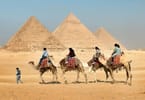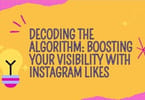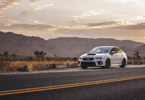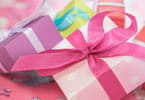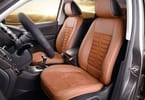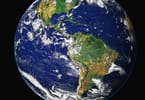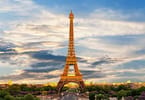With the influx of new hotels, restaurants, bars, and shops, many Angelenos are rushing to visit DTLA’s thriving neighborhood scene, but how do you know where to go? We scoured the area to find out what’s worth checking out, and here are ten things you might not know about downtown LA.
There’s more public art than you think.
Speaking of public art, Downtown LA has more than its fair share of monuments and statues that stand as beacons for travelers. The first thing you notice when you enter the Arts District is the public artwork – and that it’s everywhere. Downtown is a public art treasure trove from the huge murals on the sides of buildings to the smaller works on window ledges, benches, and doors.
Key Features in DownTownLA
- There’s a whole (free) museum to be discovered in an alleyway.
It’s called Grand Central Art Center, and it’s located in the alley between Main and Spring Street and 2nd and 3rd Streets. The area is also home to works by Shepard Fairey and Mark Dean Veca and has been dubbed “Alley-Oop” because of the art.
- There’s a 140-foot tall sculpture of a pair of glasses.
The LA Mural is the World’s largest painted pair of glasses. It’s so large you can see it from miles away… and it’s painted on the side of a building, not just a mural on the ground! Artist Robert Vargas created it in 2008.
- You can get a piece of dessert along with your cup of coffee at Urth Caffe.
Each downtown location features a display case filled with dozens of pastries and desserts you can buy after enjoying your meal. Donuts, croissants, tarts, cakes, cookies, brownies… if you can eat it, they have it for sale!
- Pixar loves downtown LA!
The heartwarming animated film “Up” was set in an imaginary city with many similarities to downtown LA including huge outdoor murals on building walls, Victorian homes converted into apartments, streetcars carrying people around town… even homes with red-tiled roofs! The film was directed by LA native Pete Docter, who lives in historic Angelino Heights among several historic homes he bought for his family after making “Monsters Inc.
Downtown LA is home to fish tacos.
In the mid-1970s, entrepreneur Ralph Rubio introduced his now-famous Baja-style fish taco to the San Diego area, and almost immediately, his restaurants started drawing lines around the block. In 1989, he opened a restaurant in Anaheim, and in 1995, he came to Los Angeles. When Rubio’s first downtown Los Angeles location opened at 9th and Hill streets in 1996, it became a hit—and a cultural touchstone.
Bonus: Downtown LA is the busiest business district in the western United States, and downtown LA has the highest concentration of hotel rooms in Southern California. The historic core of Downtown LA is home to more hotel rooms than the total number of rooms in San Diego’s Hotel Circle, San Francisco’s Union Square, or Seattle’s Pike Place Market area.
Downtown LA is the home of the original In-N-Out burger. In 1948, Harry and Esther Snyder served their first customers from a tiny 10-stool counter in a vacated Lily Tulip manufacturing building at the corner of Westlawn and La Brea Avenues.
Little Tokyo isn’t part of downtown LA – even though it is located within walking distance of Union Station and the Financial District, Little Tokyo is its little neighborhood. It is part of Little Tokyo Services Center, Inc., a separate non-profit organization. The cultural hub today known as Little Tokyo was originally founded in 1887 as an enclave for Japanese citizens who had emigrated from Japan and was once home to a thriving Japantown. In 1909, the community was renamed East Los Angeles, and in 1931 it became known as Little Tokyo. In 1942, following the Internment of Japanese Americans, the community was renamed again to become known as Boyle Heights.
The Disney Concert Hall is the home of the LA Philharmonic – one of the most renowned orchestras in the World, which means that if you’re looking to see some A-List musicians coming through town, this is one of the spots you should keep your eye on.
The 10 Freeway doesn’t end downtown – if you somehow manage to miss the ten freeway on your way to downtown LA, you can take Alameda St north to where it connects with the five freeway that will take you back outside of downtown.
The Bradbury Building used to be a morgue. Before renovators saved this historic building from being torn down, it served as a morgue for corpses waiting for state identification or autopsies after being taken out of police custody.
Two bridges span the LA River.
The Los Angeles Downtown News reports that the First Street bridge dates back to 1913. The bridge was used as an entrance for freight trains to deliver materials to warehouses near the river. This bridge is still in use today and connects the Arts District to Little Tokyo. The second bridge, known as the Sixth Street bridge, was inaugurated in 1926, and ancient Roman aqueducts inspired its architecture.
Close to most countries
LAX is one of the closest airports to most countries (not including Mexico) in the World, making it easy to travel abroad at affordable prices.
Downtown LA has great nightlife.
Downtown LA has the best nightlife in the city. The variety of bars and clubs means there’s always something to choose from, whether you’re in the mood for a fun dance party or a chill spot to hang with friends. Downtown LA is also great for day drinking.
It’s no secret that Downtown LA is home to some of the best restaurants in the city. What better place for day drinking? You can enjoy a craft beer or local wines at lunch or brunch and then head out for cocktails at night.
WHAT TO TAKE AWAY FROM THIS ARTICLE:
- The Disney Concert Hall is the home of the LA Philharmonic – one of the most renowned orchestras in the World, which means that if you’re looking to see some A-List musicians coming through town, this is one of the spots you should keep your eye on.
- Downtown is a public art treasure trove from the huge murals on the sides of buildings to the smaller works on window ledges, benches, and doors.
- In 1948, Harry and Esther Snyder served their first customers from a tiny 10-stool counter in a vacated Lily Tulip manufacturing building at the corner of Westlawn and La Brea Avenues.




